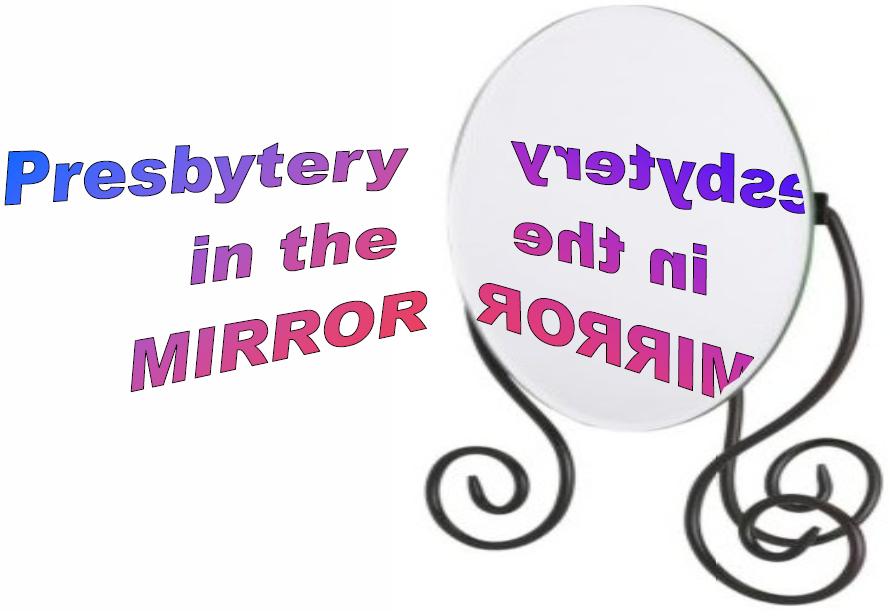The beginning of 2012 begins the age-old tradition of making, and then following (or promptly forgetting), our New Year’s resolutions.
For the Presbytery of New York City, the body is endeavoring to follow its primary 2012 resolution made six months early: to be a kinder, gentler body.
The road to resolution has been in the works for some years.
It’s no secret that the presbytery’s parliamentary proceedings have often been sidetracked by a looming presence ― an 800-pound gorilla of internal turmoil which seemingly rears its ugly head every time a controversial or conflictive situation comes to the floor.
Commissioners and outside observers have found the bubbling angst an odd anomaly for a presbytery which is consistently lauded for its progressive history, its generosity in mission-giving and, most especially, for the way in which its members come together in worship.
Tension and strain are not uncommon elements within meetings of the PC(USA), where polity provides for dissent. In New York’s case the turmoil had become cancerous. Pitched verbal battles became less sporadic and more common.
None of this happened in a vacuum.
As far back as May 2006, the Presbytery sought to address this rancor by embarking on a two-and-a-half year process to develop a new set of operating procedures. Known as The Strategic Plan, these new ways of doing things were built upon the body’s existing Mission and Vision Statement, which includes such goals as “Identify, resist, and contend with both church and secular powers that separate, divide, or demean peoples” and “Cultivate creative and responsible stewardship of the human and financial resources for ministry.”
Approved in March 2009, the specifics of The Strategic Plan have yet to be worked out and implemented.
The process was put on hold in June 2009 due in large part to the stepping down of the executive presbyter, the Rev. Arabella Meadows, for health reasons. She later died. This delay led a group of frustrated commissioners to petition the Synod of the Northeast to empower an Administrative Commission to oversee operations of the Presbytery of New York City. In mid-October 2009, after hearing from the pro-AC commissioners plus those who recommend an alternate solution, the Synod appointed an “observe-and-report” team.
While all this was unfolding, New York brought in the Lombard Mennonite Peace Center in 2010 to begin a healing process. While the seminar series provided valuable insights and tools for repairing interpersonal relationships, not every commissioner “bought into” the process, which lost momentum due an overly-long hiatus prompted by the unexpected serious illness of the seminar leader’s wife (she has since recovered.)
With the Lombard process on the figurative ropes, another group of commissioners developed "A Proposal for Moving Forward” and presented it for adoption during New York City’s May 2011 Stated Meeting. However, while noting the importance of this initiative, the presbytery chose not to rush a vote at the tail end of an already long meeting, opting instead to call a special informational meeting some two weeks later, inviting comments from the commissioner during the interim.
The extent of opinions voiced and written made referral to the body’s General Council for further exploration the clear and obvious choice. Revisiting the matter during its September Stated Meeting, the Presbytery directed the General Council to report back to the body during its January 24, 2012 meeting.
To accomplish this, the Council scheduled three “town hall” meetings, Oct. 11 in Manhattan, Oct. 25 in Brooklyn and Nov. 3 in The Bronx. The Council invited participation from all church members ― not just the commissioners ― from every congregation. All documents in question ― or their summaries ― were posted on the Presbytery’s website.
For years, cartoonists have illustrated the concept of the bright idea with a lit light bulb above a person’s head. In church circles, that light bulb is a fluorescent one hanging from a ceiling fixture in a congregation’s fellowship hall.
Each town hall convened with prayer; each was guided by the Council’s Project Committee, chaired by Ruling Elder Kevin McDonald. Assisting were the Rev. Perry Wooten, chair of the Council, the incoming presbytery moderator, the Rev Jose Gonzalez-Colon and Interim Executive Presbyter, Tony De La Rosa.
Organizers distributed a survey asking attendees to disagree or agree with statements in such categories as “God & Eternity,” Jesus & Salvation” and, of course, “Role of Church & Presbytery. ”
With the Town Halls’ raison d’être restated:
- Who are we as a Presbytery?
- Why are we here? and
- Where are we going as an organization?
the Committee threw open the floor for comments and questions.
In Part II, you’ll have a seat at the three Town Hall meetings, where no subject was off-limits, no question out of bounds and with plenty of surprises.
Jim Nedelka works at a major broadcast network and is a regular contributor to The Presbyterian News Service. A Ruling Elder for three decades, he recently completed a seven-year tenure as Elder Commissioner from Manhattan’s West-Park Presbyterian Church to New York City Presbytery, as well as a two-year term on the Administrative Commission for Home Street Presbyterian Church in The Bronx.

